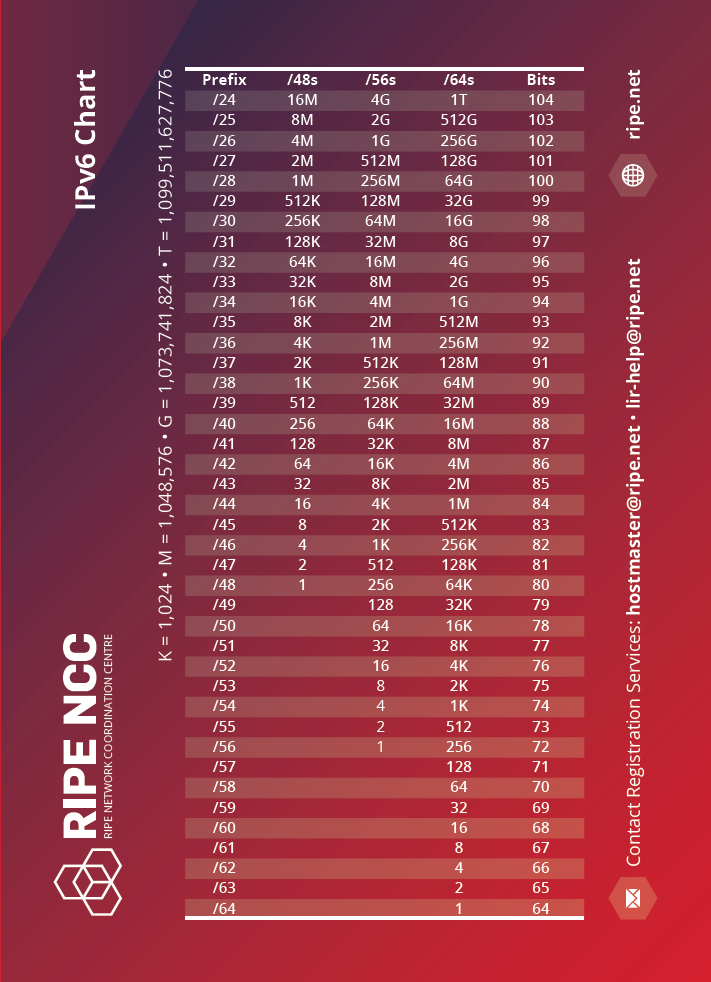IPv6
IPv6 is similar to IPv4, but it is structured so that all LANs have 64 bits of network prefix as opposed to the variable length of network prefix1 that IPv4 networks have. All IPv6 networks have space for 18,446,744,073,709,551,616 IPv6 addresses.

Download: IPv6 Chart (PDF)
Currently, most ISPs assign /48 network prefixes to subscribers' sites (the End Users' networks). Because all IPv6 networks have /64 prefixes, a /48 network prefix allows 65,536 LANs in an End User's site.
The current minimum IPv6 allocation made by the RIPE NCC is a /32 network prefix. If the LIR only made /48 assignments from this /32 network prefix, they would be able to make 65,536 /48 assignments. If they decided to only assign /56 network prefixes they would have 24 bits available to them, and so could make 16,777,216 /56 assignments.
For example, if a /24 IPv6 allocation is made to an LIR, it would be able to make 16,777,216 /48 assignments or 4,294,967,296 /56 assignments.
To give some perspective, it is worth noting that there are 4,294,967,296 IPv4 addresses in total, significantly less than the number of IPv6 addresses.
IPv6 Relative Network Sizes
/128 | 1 IPv6 address | A network interface |
/64 | 1 IPv6 subnet | 18,446,744,073,709,551,616 IPv6 addresses |
/56 | 256 LAN segments | Popular prefix size for one subscriber site |
/48 | 65,536 LAN segments | Popular prefix size for one subscriber site |
/32 | 65,536 /48 subscriber sites | Minimum IPv6 allocation |
/24 | 16,777,216 subscriber sites | 256 times larger than the minimum IPv6 allocation |
1 RFC2526, Reserved IPv6 Subnet Anycast Addresses (Proposed Standard)
KB Article Added: 2023-09-22
Source - RIPE NCC: Created: 04 Jan 2011 - Last updated: 09 Aug 2019